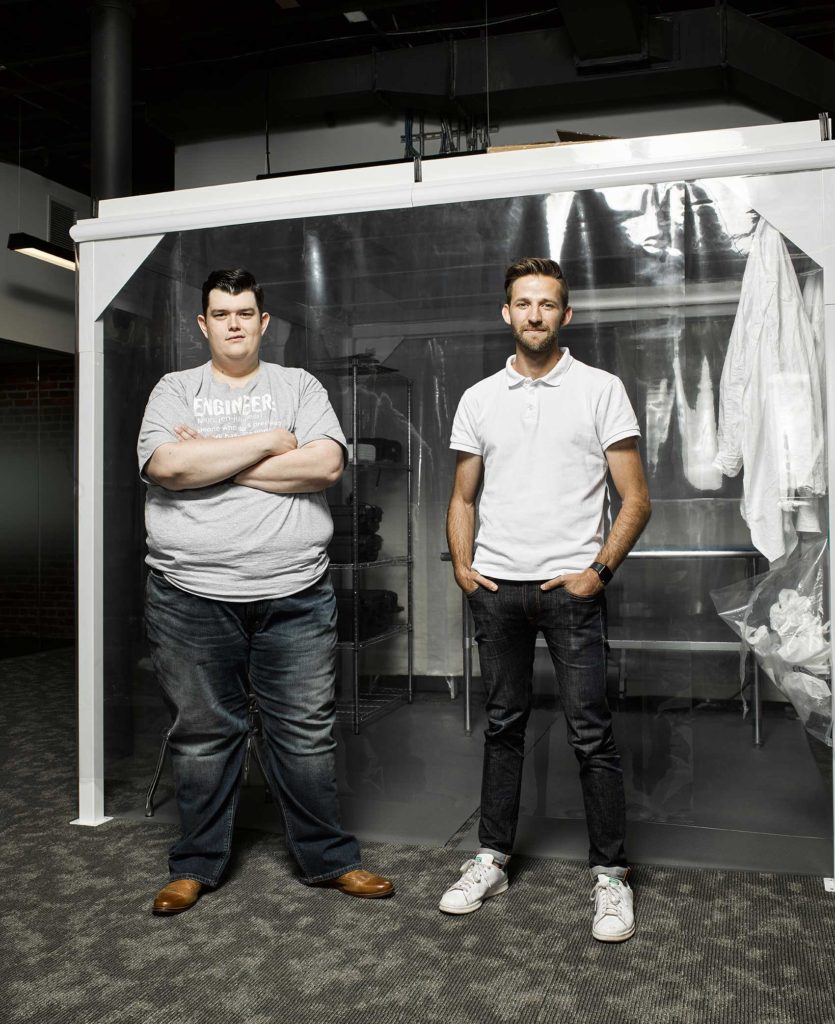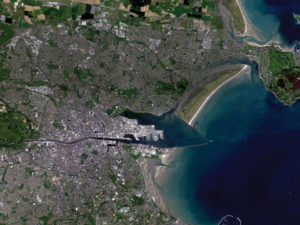
Dylan Taylor
Chairman and CEO, Voyager Space Holdings
Space for Humanity www.SpaceForHumanity.org
Denver, Colo.
ACCORDING TO INDUSTRY SOURCES, NEARLY 8,000 NEW small satellites are scheduled to be in service within the next ten years. Because of this explosion of hardware, coupled with the data generated from traditional larger satellites, the industry is now facing an increasing challenge to transmit all the data generated to Earth in a timely and efficient manner. This is pushing the necessity for new business models and creating opportunities for investors.

FIGURE 1. The RBC Signals team of Alex Shumilin, Zach Reich, and Christopher Richins shown at the ground station in Dubai, UAE. Courtesy of RBC Signals.
GROUND STATION INNOVATIONS:
THE SHARING ECONOMY AND PORTABLE RECEIVERS
These models have been well received by the market and both RBC Signals and Atlas Space Operations have successfully raised money. Atlas closed a funding round last year led by Space Angels and RBC Signals closed on $1.5M in funding in March of last year. RBC’s round was led by San Francisco-based Bee Partners and other investors included Abstract Ventures, Blacktop Capital, and Comet Labs.
Another key innovation within downlink optimization is changing the nature of the ground stations themselves. Atlas announced last year a partnership with NASA for portable ground-based receivers. According to the press release, Atlas will be working alongside NASA Goddard Space Flight Center to “advance the development of the Atlas LINKS system, a lightweight, high-performance alternative to traditional parabolic, mechanically steered radio frequency (RF) satellite ground stations.” The first of its kind in the world, the system is a portable and easily deployable RF ground system.
LASERS FOR DATA DOWNLINK
Laser-based downlink is another unique model that has the possibility to change the data transmission game. Analytical Space, a spin-out from Harvard founded by Justin Oliveira and Dan Nevius uses laser-based transmission of data relayed among satellites in LEO to vastly increase the amount of data that can be transmitted per unit of time. Analytical Space is developing a network of nano-satellites that will provide a communication backbone in space for remote sensing satellites and remote industrial IoT applications, enabling planet-level analytics and the global industrial internet. Their first satellite is launching in May of 2018 from the International Space Station. Their business model seems to be attractive to investors and Analytical Space has been successful raising money from high profile investors such as Shasta Ventures.
BridgeSat announced the opening of the world’s first network operations center (NOC) for free-space optical communications. The NOC, located in Denver, Colorado, provides monitoring, management and control for all operational functions, including the optical ground station (OGS) network and customer payload repository. BridgeSat is in the process of building out optical ground stations in 11 locations around the world for laser terminal data downlink, anticipating this increase in the use of lasers for data downlink, rather than using RF.
Germany-based Tesat manufactures laser communication terminals which have successfully transmitted data from LEO to LEO and is currently transmitting data in a relay service between LEO and GEO satellites as part of the SpaceDataHighway. The SpaceDataHighway is a data relay service offered by Airbus, as reported in this publication in Summer 2017
Laser-based transmission has one distinct disadvantage in that cloud cover can block transmission. However, with the increase of machine-to-machine in-space communication, data can be routed elsewhere in LEO and GEO until an open downlink channel can be found. Since the data transmission rates are so high, only a small opening can often generate successful downlink of the dataset.
ON-BOARD PROCESSING
Minimizing the need for downlink is more in-space computing resources. Imagine that telemetry from a smallsat constellation is designed to answer a specific predictive problem such as weather forecasting. If the computing resources to answer such a problem were in space, then theoretically all that would need to be transmitted terrestrially is the answer to the question posed. I would expect additional business models to surface that focus on in-space computing resources and processing.
In summary, the most valuable part of any satellite constellation is always the data. As the hardware generating the data continues to proliferate, business models that help optimize how that data is captured, analyzed, processed and sent to Earth will continue to evolve creating many opportunities for investors and entrepreneurs.
Data Downlink Innovations
The need for getting the vast amounts of data to Earth in a timely manner continues to increase. New important trends that are emerging are the sharing model, such as that offered by RBC Signals, Atlas Space, and Loft Orbital; and optical lasers for data downlink (rather than using the RF spectrum), such as solutions offered by Analytical Space, BridgeSat, Airbus and Tesat.

FIGURE 3. Co-founders of Analytical Space are Justin Oliveira and Dan Nevius, left to right, who founded the company from Harvard to do data relay via lasers in LEO for more optimized data downlink.





